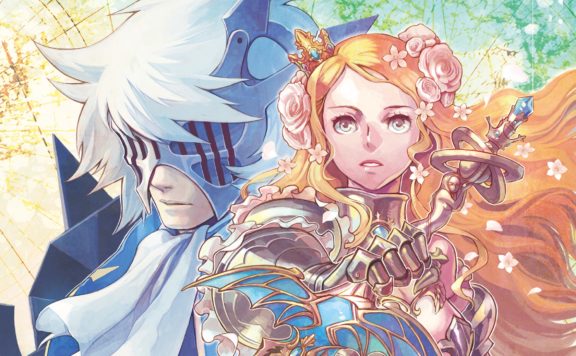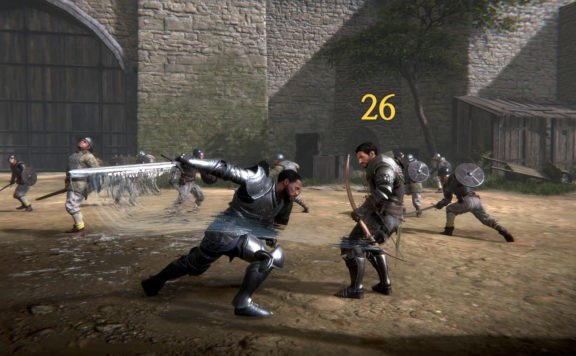When I think of the term “dungeon crawler,” I typically associate it with ARPG games (the Diablo series, Warhammer 40,000: Inquisitor – Martyr) or top-down adventures like early Zelda titles or Moonlighter. You know the kind I mean: you explore a dungeon on an epic quest, kill a bunch of stuff, solve a few puzzles, get loot or hoards of gold, and, perhaps, save a princess. The game in today’s review has most of these things, but is set in a distant past where honor was glory and treasured were the blades in faithful service to their leaders. This is our review of Haunted Dungeon: Hyakki Castle.
In Haunted Dungeon: Hyakki Castle, the story begins with the ending of an era of turmoil by Tokugawa Ieyasu and the founding of the Tokugawa Shogunate. When members of the Shogun’s council were assassinated, the Shogunate sorcerers began a desperate search to root out their enemy. This led to the capture and banishment of Kigata Doman to the remote Hyakki Island.

All was peaceful until a grim package arrived on the doorstep of Edo Castle: a box containing three severed heads with an ominous signature. That signature was from the Lord of Hyakki Castle, Kigata Doman. Rumors began to swirl about the appearance of a mysterious manner upon the island of exile and increased sightings of yokai (monsters, spirits, and demons).
Recognizing the threat, the Shogunate called a meeting with a secret collective dedicated to fighting the supernatural. It is here that you form a party of four members from various species, human and yokai alike, to search out the mysteries of Hyakki Castle and meet Kigata Doman’s threat with justice.
Bestowed with a magical tool, the “Ishin no Ofuda,” the party sets out. In short order, their boat enters a storm, they are shipwrecked and subsequently captured by Doman’s minions. Now, you must escape imprisonment AND stop the master of Hyakki Caste.
From the very beginning, Haunted Dungeon: Hyakki Castle puts you in control of your group. You choose the race, gender, and specialization of each of your party members. Your party can consist of humble humans, trickster tengu, demon ogre oni, or the feline nekomata. Each member can take on the roles of samurai, ninja, Sohei (monk), or Shinkan (priest). Characters have individualized skill trees which can be customized with points earned from leveling up. They also have passive skills which are earned by hitting certain levels. For some odd reason this tab had menu title of “Data Not Found,” yet they still applied. It is a small bug, but it did keep me from looking at it for a good long while!

Each character has their own Health and Magic pools (HP/MP) and a Hunger meter (HG). Health and Magic work like any other RPG (taking damage reduces HP, using abilities costs MP), but HG is reduced every time you move or use a skill. Each can be restored with items found within the dungeon, with HG being the peskiest of these meters to manage, especially when exploration is supposed to be rewarded (100% floor clears open a secret room).
Movement happens on a grid with your left thumbstick controlling which direction you move and the right stick controlling which direction you are facing. Actions can be designated to each of the four buttons on the front of the controller, leaving the shoulder buttons for interacting with the environment and cycle through characters.
While gameplay within Haunted Dungeon: Hyakki Castle is in real-time, the grid system can make it feel very sluggish with combat aspects of the game feeling rather stilted. Each ability is on a global cooldown, making it a game of cycling through characters to blow their abilities while moving on the to the next.
However, some interesting strategy comes into play with the “Ishin no Ofuda.” I never did tell you exactly what that does… did I? I saved the best for last. It is the crowning mechanic in Haunted Dungeon: Hyakki Castle.

The “Ishin no Ofuda” is a magic scroll that, when a party to split it between two groups, turns one group to stone while the other moves independently. This creates some interesting possibilities for problem-solving and combat. Some enemies are immune to frontal attacks, but by using the “Ishin no Ofuda” you can flank enemies to exploit their weaknesses. It is not always the easiest thing to handle, but when you can pull it off, it’s rather satisfying.
If you like strategy games and are really into ancient Japanese legends, Haunted Dungeon: Hyakki Castle takes art and story from the Edo period to create a unique strategy game. While it was not entirely my speed (it does put the crawl in “dungeon crawl”), it is a break from the frantic pacing of many dungeon crawlers with a central mechanic adds creative possibilities to puzzle solving and combat.
Note: Our copy was reviewed on Nintendo Switch with a code provided by PR.
COMPARE TO: Pathways in the Darkness, The 7th Circle, 8-Bit Adventure Anthology: Vol. 1






